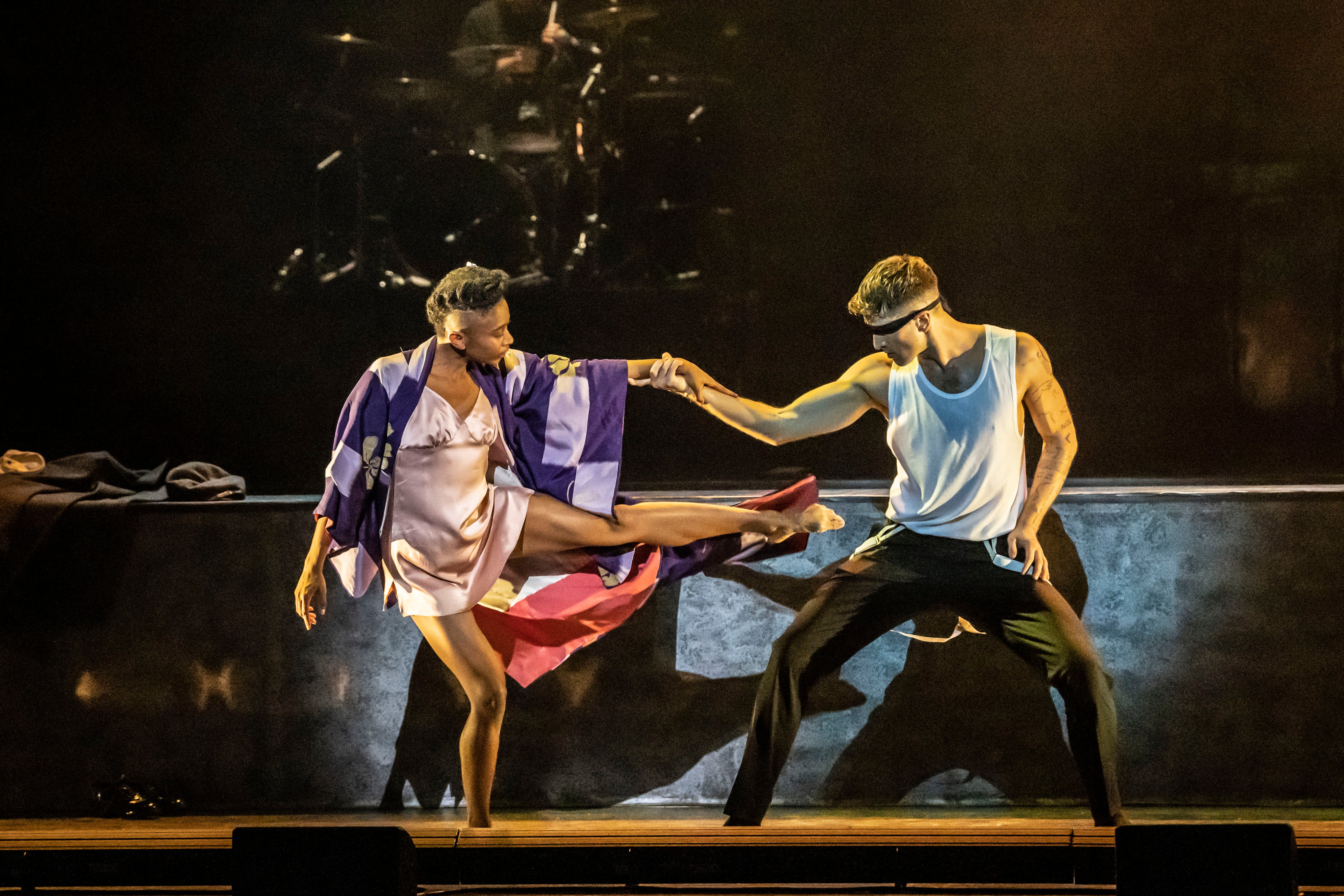Peaky Blinders - The Redemption of Thomas Shelby review: Dance show mixes rock gig energy with physical power
Rambert Dance company positions itself for a new audience with this smart, confident show created alongside Steven Knight

With a swagger, Steven Knight’s Peaky Blinders has gone from an award-winning television series to an ever-expanding brand. There are plans for a film and a spinoff series, a festival, clothing brands and more. Now Rambert Dance translate the 1920s Birmingham gangsters into movement, mixing rock gig energy with urgent physical power.
Choreographed by Rambert’s director Benoit Swan Pouffer and created in collaboration with Knight, the new show is a stylised dance drama. Taking a free hand with the series, it focuses on the love story between Thomas Shelby and Grace Burgess. There are snatches of narration from Benjamin Zephaniah, but the story is told in dance, and through its fierce, stylish production.
The show starts in the trenches. The soldiers of Thomas Shelby’s tunnelling gang come boiling up out of the chasm that runs round the edge of Moi Tran’s set design. There’s a driving beat from the live band, while cellist James Douglas prowls the stage like a wary sentry.
The action jumps to Birmingham, with some of Pouffer’s strongest choreography. In a factory scene, arms link and pump like pistons, bodies turned into machines. Spilling into a nightclub, the dancers explode into individuality, with leggy kicks and fabulous costumes by Richard Gellar. Roman Gianarthur’s score supports the action, while weaving in Nick Cave’s “Red Right Hand” and other songs associated with the series.
Naya Lovell’s Grace carries herself with magnetic poise, pulling every scene into focus, while Guillaume Quéau’s Thomas Shelby is a bold mover, with a sense of physical threat. Musa Motha, who is an amputee, plays Barney with stark conviction. Working with crutches, Motha and Pouffer weave distinctive silhouettes into vivid storytelling.

The second half is weaker. Pouffer takes a more abstract approach, stripping down the production to focus on the characters’ emotions. When the steps take the spotlight, they lack power. The opium sequence is thin, while Thomas’s scene of grief feels unfocused. An earlier sequence, for the widow of a rival mobster, manages more punch in half the time. Swapping her black veil for her husband’s hat, Aishwarya Raut makes a threatening figure of vengeance.
Throughout, there’s a sense of Rambert positioning itself for a new audience, trying to find a new way to connect. The company’s fine dancers give it total conviction, whether plunging into brawl scenes, spilling offstage into the auditorium, or swooping into period style. It’s a smart, confident show.
Troubador Wembley Park Theatre, until 6 November followed by a UK tour in 2023. peakyblindersdance.com
Join our commenting forum
Join thought-provoking conversations, follow other Independent readers and see their replies
Comments


Bookmark popover
Removed from bookmarks